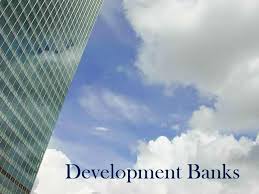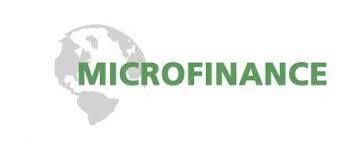Development banks and their roles, objectives, types, examples in Nigeria, and a list of development banks are our key focus of study in this post. We will convey the basic information you need to know about development banks. This post will guide you all the way through.
DEFINITION DEVELOPMENT BANKS
Development banks are financial institutions that provide capital, or funds, to companies for economic growth with a non-commercial intention. Although most of the time, these organizations are properties of the government or charity organizations, whose main aim is to provide funds to those enterprises that couldn’t get funds from commercial lenders.
Although the government most times uses these banks as a form of their economic aid, innovations, and plans. And these organizations play a role in providing funds at a high-risk rate. Typically these banks gain support from wealthy countries.
Development banks, otherwise called development finance institutes or companies, operate entirely on risk-taking processes, equity positions, and risk guarantee instruments for private sector investments in a wealthy country.
Most development banks set criteria these companies should meet before granting those funds for their development plans. Some of these criteria include impact investing and also socially responsible investing.
ROLES OF DEVELOPMENT BANKS
You know, development banks are set up for the sole purpose of economic activities, which most of the time the banking sector ignores. In markets with limited competition, development banks aid the creation of an ecosystem that specializes in micro, small, and medium-sized enterprise lenders to provide a stable funding source. The roles of development banks in our communities are many but will compress a few here. Some of the roles the development bank plays include:
ENTREPRENEURIAL ROLES
These banks embark on the task of industrial promotion, discovering investment projects, searching for economic and technical enhancement ways, survey conduction, and feasibility studies. All of these are set up because most developing countries lack entrepreneurs who will set up new economic projects. Due to managerial problems and a lack of experts
Hence these roles of the development bank help entrepreneurs get a grip on fast industrialization. It also helps in the savings and investment habits of entrepreneurs, meanwhile helping them to seek balanced growth.
COMMERCIAL BANKING BUSINESS
In developing countries, commercial banks’ traditional approach to lending proposals and funds has not helped their economy in any way, nor have they been able to take up jobs in a proper way. Development banks get both medium- and long-term finance to companies. However, they take up other functions of the bank, such as opening letters of credit, discounting bills, and accepting deposits.
There is, however, no uniform activity in development banks and they as much extend their financial aid to meeting working capital wants to their own loan only if they fail to arrange funds from other sources.
UNDERWRITING OF SECURITIES
Development banks have become a worldwide phenomenon that they acquire securities of industrial units through direct subscribing or underwriting. Meanwhile, both can be used in some cases; they acquire these securities through the promotion of work or by converting loans into preference or equity shares.
However, these banks do not hold on to securities permanently. They will try to disinvest in these securities when it is not needed again although the banks do it in a way it wouldn’t affect the market price of these securities, and itself not lose managerial control.
These banks are playing a lot of roles in developing and underdeveloped countries’ markets, industries, and the development of the country itself.
N.B Meanwhile, these banks may as well build portfolios of industrial bonds and stocks.
FACILITY REFINANCE
The development banks provide funds for the lending institution against loans extended to the industrial sector. However there is no direct lending to the lending institutions, putting up the means, institutions that provide funds are provided with indirect funds by the development banks.
In India, the industrial development banks rely on term loans granted to the industrial sector by the state financial corporations.
FINANCIAL SPACE FILLERS
A development bank helps enterprises in two major ways and they include:
Subscriptions to the bonds and debentures of a company and also underwrite their bonds and debenture. Thereby, guaranteeing loans raised by foreign and home companies or sources. They as well engage in acquiring machinery and equipment from home and aboard.
COMBINED FINANCE
Combining finance with other financial institutions is also one of the features of development banks. In a situation where banks have problems such as legal problems and resources issues. These banks may be forced to combine with any fit financial institution to fund projects and in most cases, their choices are no other than development banks.
It might be impossible to meet the requirements of concern of the institution by one institution. So, more than one or two managements would be involved to deliver projects, be it small or medium-sized projects.
OBJECTIVES OF DEVELOPMENT BANKS
The main objectives of the development banks include:
- Improve the capital market in a country
- Enhance industrial growth
- Upgrade employment opportunities
- Develop more self-employment projects
- Eradicate regional imbalance
- And Bring about new technologies and developments
- Encourage substitutes for importation and as well generate more exports
- To encourage science and technologies in new or rural areas by providing the risk capital needed
- Reduce or remove entirely regional imbalance
- Revive the sick or weak units
- Help large industries get better management by training personnel before management
- Enable help to grow entrepreneurs
If you look at these objectives of development banks closely, they are all public centered on bettering the people. The objectives of development banks are simply for the good of the people.
TYPES OF DEVELOPMENT BANKS
The two types of development banks are:
COMMUNITY DEVELOPMENT BANKS
These types of development banks are primarily local banks that help local areas, individuals, and small organizations in their areas. They may as well be afflicted to commercial banks. Their aim is to eradicate poverty by infusing funds into the communities’ economies.
These types of development banks are not government properties they are totally private institutions. They differ from commercial banks in slight ways because they do not perform the actions of technical assistance programs and also investing in low-cost housing projects. Development banks for more access to government and private funds as such they always in check by the federal and state government.
Most times these banks are established by individuals in the community which these banks are citied sometimes evolving from community projects . This is why they would loan as small as $500 while commercial banks see the amount as unprofitable.
However not all these banks are always successful because of factors involving the community where they cite such as urban crime, the inexperience of people living in those communities as far as no knowledge of banking services like checking a savings account?.
Meanwhile, the high risk too in lending businesses in rural areas can be a major cause of an unsuccessful development bank because these businesses most times don’t do well in rural areas but can in urban places.
Development is not new to our societies as they have been there to help regulate poverty and as well set up structures to help grow areas especially rural ones that are backward in development and technology.
REGIONAL DEVELOPMENT BANKS
A big deal of this type of development bank funds arises in the financial market such as issuing bonds like all banks through the successful performance of their asset. This bank deals with the government both as bankers and as well clients although this effect has been changing.
The world which is an example of this development bank consists of many several member organizations that help train and educate people on how best to use their resources example: advising the government on economic policies, encouraging effective agricultural practices, aiding managers and workers of private sectors learn about new technologies.
- ASIAN DEVELOPMENT BANK (AFDB)
- AFRICAN BANK (ADB)
- THE EUROPE INVESTMENT BANK (EIB)
- THE NORTH AMERICAN DEVELOPMENT BANK (NADBANK)
- THE INTER-AMERICAN BANK (IDB)
These banks finance a wide range of projects like the deployment of fiber-optic cables while some are active in advancing social policies for freedom and human rights.
However, they also take on the functions of economic advisers and investment bankers and finance projects like fiber-optic cable. Many of these regional banks are active in advancing social policies like freedom and human rights.
Examples of development banks in Nigeria
The examples of development banks in Nigeria is our focus for this part of the post. And there are a lot of examples of development banks in Nigeria bu then some of these banks are not in function again. However, some of these examples of development banks in Nigeria are still active and of service to communities.
Read also: STATES WITH THE LOWEST PROPERTY TAXES: Best 10 States With the Lowest Taxes 2023
FEDERAL MORTGAGE BANK OF NIGERIA
Founded by the federal government of Nigeria. IT serves as a replacement to the prior existing NIGERIA building society a mortgage bank in NIGERIA. Today this have become a bank in NIGERIA to source funds for private sectors and create avenue for the growth of the people and the community in which it is located at.
NATIONAL ECONOMIC RECONSTRUCTION FUND (NERFUND)
The national economic reconstruction fund in state with the main objective of increasing the number of goods and services available for consumption and export. NERFUND also provide employment and as well as add value to the economy.
NERFUND provides both small and medium finance to both small and medium scale production companies. Hence, the company has approved loans for over one thousand, four hundred and ninety-seven project valued at 5b (N5b).
INFACTURUATION BANK
This bank was established in 1922 under decree 22 of the 1922 constitution of the federal republic of Nigeria. This type has a special ownership structure which means its major owner. And the private sector but also the federal, state, and local government. Even the Nigerian labor congress as its shareholders.
It provides support for key long terms infrastructure projects like Power and renewable energy, water provision, solid waste management, housing and district development, transport development, municipal common services.
NIGERIA IMPORT AND EXPORT BANKS
Formerly known as Nigeria export credit guarantee & insurance cooperation. Before it was changed to Nigeria’s import and export bank in 1991 under act 38 of 1991.
NEXIM provides export credit guarantee and export credit insurance. For export of Nigeria’s goods and services within and outside West Africa. In 2014 the structure had the capacity of $36.5b in credits and securities for non-Nigeria’s non-oil exports.
BANK OF AGRICULTURE
Bank of agriculture is sponsored by the Nigerian government. To fund both small and large scale farmers as well as small businesses in local areas. This bank created in 2000 assumed the asset of the National Agriculture and Cooperative bank. Even people’s bank and the family’s advancement project.
Read also: Agricultural grants
BANK OF INDUSTRY
The bank of the industry is the largest and also the oldest bank currently active in Nigeria. It holds joint ownership of 94.80% by the ministry of finance. 5.19% by the central bank of Nigeria and 00.1% for private shareholders.
BOI manages and disburses government enterprise and empowerment programs. Which is one of the social intervention programs introduced by the federal government. The bank is instrumental in circulating the N300 billion power and aviation intervention fund.
The bank also manages and disburses one of the federal government programs. For social intervention called the government enterprise and empowerment program (GEEP). BOI generates a net income of N14.5billion (2016). Total asset worth N682.97billion (2016), and number of employees rating 335 people (2016).
List of Development Banks
These are a list of the major development banks we have all over the world. They are mainly grouped into 4 while the other basic list of development banks fall under these 4 respectively. They include:
- Bilateral List of Development Banks
- Regional Development Banks
- Breton Woods Institutions
- MULTILATERAL LIST OF DEVELOPMENT BANKS.
This is the list of development banks we have. And they are separate for a better understanding. Under these divisions are also their subdivisions.
Read Also: FEE SIMPLE ESTATE: Definition, Examples & Typeso:
CONCLUSION
This post should be your guide on searching through for the knowledge of development banks. And it full-body ranging of definition, list, examples in Nigeria, objectives, and any other information that might seem to interest you about development banks.
What is the difference between a bank and a development bank?
Under the Companies Act, commercial banks can be established as enterprises. A specific Act issued by the government authorizes the establishment of development banks. Commercial banks make loans to both people and companies. Governments receive loans from development banks
How many types of development banks are there
While some are state-level or lower-level institutions, some are all-Indian institutes. There are currently five industrial development banks, one agricultural development bank, and one export-import bank operating throughout all of India.
Who regulates development banks?
Currently, only nine specific DFIs—IDBI, IFCI Ltd., TFCI Ltd., IDFC Ltd., IIBI Ltd., EXIM Bank, NABARD, NHB, and SIDBI—are regulated and overseen by the RBI.
How is development bank funded?
Funds for the AfDB come from subscriptions from member nations, particularly non-regional members, borrowing on global markets, and loan repayments. ADF and Nigeria Trust Fund (NTF) capital increases also contribute to its funding.
Do development banks help poor countries?
To improve economic management and lessen poverty, the MDBs offer developing nations financial and technical support.
Is a development bank a financial institution?
A financial entity known as a development financial institution (DFI), commonly referred to as a development bank or a development finance corporation (DFC), is one that offers risk capital for economic development projects on an unpaid basis.






